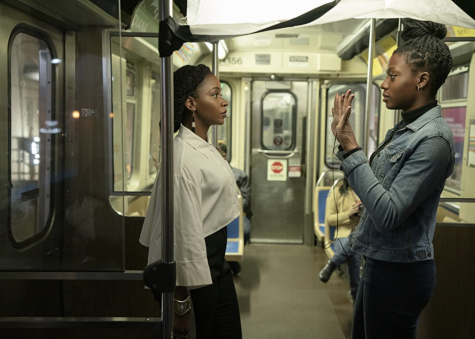REVIEW: ‘Candyman’ might be the best film of the summer
As theatrical releases have become more frequent again since the beginning of the summer, with that comes an unpredictability pertaining to the financial success of films that have gone forward with theatrical releases. “A Quiet Place Part II” and “F9: The Fast Saga” performed exceedingly well under the duress of the pandemic while studio tentpoles like “Black Widow” and “Space Jam: A New Legacy” performed below studio expectations, which may be a result of the same-day streaming release format adopted by both Disney and Warner Bros.
Released on Aug.27, “Candyman” stands out as one of the last theatrical releases of the summer. Given the film’s status as an IP that has been untouched for some time, and the emerging presence of COVID-19’s delta variant, only time will tell whether or not it will become a victim of the box office troubles brought on by the pandemic. Co-written and directed by Nia DaCosta, the Jordan Peele-produced sequel reimagines and updates the “Candyman” narrative to present the horrific flaws regarding the perception of art and social justice in the present day.

Set nearly 30 years after the original film of the same name, the story follows struggling artist Anthony McCoy (Yahya Abdul-Mateen II) as he faces the difficult task of creating a comprehensive piece of art that will elicit emotion and help him advance in his career. Anthony searches for inspiration in the housing projects of Cabrini-Green homes in Chicago and becomes fascinated by the local horror tale of Candyman (Tony Todd) a supernatural killer who murders those who summon him by repeating his name five times while looking into a mirror. Anthony’s fascination soon becomes obsession as the dark history of Candyman becomes the subject of his latest art and causes him to push away his girlfriend and art gallery director, Brianna Cartwright (Teyonnah Parris). In the midst of Anthony’s spiral, a monstrous killing spree takes place that begins to affect him and those around him.
The film presents a heavy theme that revolves around the differences in social class, as well as the victimization of Black people at the hands of a flawed justice system. Anthony and Brianna are shown to live in a luxurious high-rise apartment that serves as a contrast to the gentrified environment of the Cabrini housing projects. The couple’s lavish surroundings are a result of the work and passion that they have put into their art, but such passion is also used as a means to appeal to a higher class in an effort to advance themselves. Anthony’s interest in the Candyman story is motivation for his art. He wants to convey the brutal victimization endured by Candyman’s previous hosts at the hands of policemen and racist figures, but Anthony exploits the story and suffering to advance his own career.

Although the film stems from the established source material, the narrative is comparable to Peele’s original films “Get Out” and “Us” in its depiction of a social system that looks down on Black people. Anthony is not too dissimilar from Chris, the main character of “Get Out,” as both men are fueled by the passion of their respective arts but face betrayal, rejection and objectification by those that they seek approval from. However, the film’s violent and haunting tone makes Anthony the subject of a tragic story that will stick with viewers long after the film’s end.
The film’s dark atmosphere is ultimately upheld by the lead performance. In his first major lead role, Abdul-Mateen displays an emotional range that felt absent from his previous supporting roles in “Aquaman” and “Watchmen” (2019). Abdul-Mateen’s performance feels transformational in the way that he naturally portrays the initial naivete of Anthony and develops the emotionally raw depiction of the character’s dark trajectory. The strength of his performance is notable in the mirrored elevator scene, which may come to be recognized as one of the film’s most recognized scenes.

John Guleserian’s cinematography is another key strength that utilizes well-framed shots and deep color schemes that adds an eerie quality to the film’s grisly moments. The color schemes within each scene are darkly rich and make each of the film’s environments feel distinctively different from one another, particularly Anthony’s art studio that dims as the film progresses and the art gallery that soon becomes the location of grisly murders. The film’s motif of mirrors and reflections creates heightened anticipation for audiences and foreshadows Candyman’s possible appearance in various scenes.
For those who have never seen the original, “Candyman” (2021) is a suitable entry point to the franchise that perfectly maintains the DNA of the original while implementing relevant social themes. Despite the current questionability of its box office success, the film serves as a tragic, grisly and evocative horror film that acknowledges the dark history of racial injustice in present-day America.










